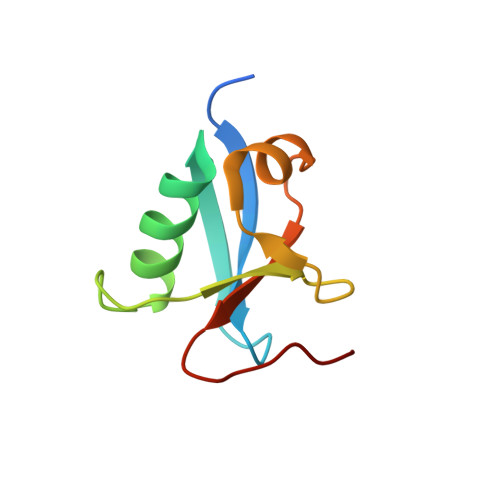CIDE domains form functionally important higher-order assemblies for DNA fragmentation.
Choi, J.Y., Qiao, Q., Hong, S.H., Kim, C.M., Jeong, J.H., Kim, Y.G., Jung, Y.K., Wu, H., Park, H.H.(2017) Proc Natl Acad Sci U S A 114: 7361-7366
- PubMed: 28652364
- DOI: https://doi.org/10.1073/pnas.1705949114
- Primary Citation of Related Structures:
4D2K, 5XPC - PubMed Abstract:
Cell death-inducing DFF45-like effector (CIDE) domains, initially identified in apoptotic nucleases, form a family with diverse functions ranging from cell death to lipid homeostasis. Here we show that the CIDE domains of Drosophila and human apoptotic nucleases Drep2, Drep4, and DFF40 all form head-to-tail helical filaments. Opposing positively and negatively charged interfaces mediate the helical structures, and mutations on these surfaces abolish nuclease activation for apoptotic DNA fragmentation. Conserved filamentous structures are observed in CIDE family members involved in lipid homeostasis, and mutations on the charged interfaces compromise lipid droplet fusion, suggesting that CIDE domains represent a scaffold for higher-order assembly in DNA fragmentation and other biological processes such as lipid homeostasis.
- School of Chemistry and Biochemistry and Graduate School of Biochemistry, Yeungnam University, Gyeongsan 712-749, South Korea.
Organizational Affiliation:
















